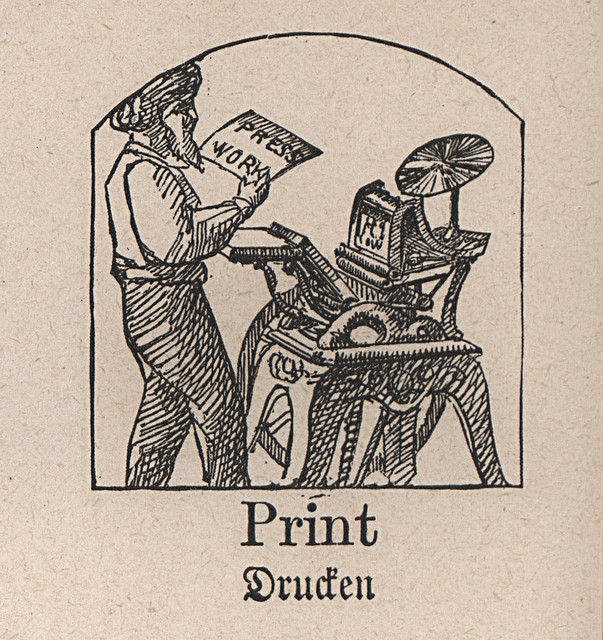Print, Readers and Text
Without a doubt, the invention of the press had an enormous impact on societies. For thousands of years many different cultures, such as the Chinese, Koreans and Japanese, had the ability to print texts. It’s generally accepted that “the crucial development in the global history of printing” was the Gutenberg press, due to its alphabetic letterpress (Ong, 1982, p. 116). When the printing press was first introduced, all aspects of European society were impacted, ranging from social, political changes in individuals’ thinking and expression.
It’s important to acknowledge “the invention of the printing press depended on a confluence of both cultural and technological forces that had been unfolding for several centuries. Print culture and technology also needed to go through centuries of change after Gutenberg’s time before the “massification” of audiences could fully crystallize”(Rubinstein, n.d.). At the time Gutenberg created his version of the printing press, there was a growing demand for books due to rapid cultural changes, the value placed on importance of books and reading (Clement, 1997).
The Gutenberg presses’ mechanized capability allowed it to mass-produce more printed materials than previous labour intensive and low yield methods of either scribes hand-copying books, or by the use of woodblock printing. Thus more people were able to access information and knowledge. In fact, the printing press is considered to be the origin of mass communication, as it “marked Western culture’s first viable method of disseminating ideas and information from a single source to a large and far-ranging audience” (Rubinstein, n.d.).
The printing press challenged the role of the Church (Bolter, 2001; Rubinstein, n.d.) and later lead to the spread of Enlightenment ideas, and resulting revolutionary social changes in terms of leadership, power structures and social values. The role of God and the Church was challenged by the increasing production and dissemination of scientific knowledge which “gave rise to a scientific community that functioned without geographical constraints” (Rubinstein, n.d.).
Whereas the oral culture passed information on through interpersonal interactions, which required memorization, print encouraged private consumption of information. Rubinstein states this orientation to privacy emphasized individual rights and freedoms (Rubinstein, n.d.). The effects of the greater legibility of print text compared with manuscripts texts had implications as well. Greater legibility made reading a silent rapid process, which in turn, created a “different relationship between the reader and the authorial voice in the text and calls for different styles of writing” (Ong, 1982). This eventually led to new writing styles, such as the novels, or poetry books using typographic space as part of the design (Ong, 1982).
Not only was the place and setting for knowledge consumption different, but the emphasis on the information was altered by print. Boulter states that “literacy is, among other things, the realization that language can have a visual as well as an aural dimension, that one’s words can be recorded and shown to others who are not present, perhaps not even alive, at the time of the recording”(2001). Similarly, Walter Ong theorizes that when a culture becomes dominantly literate, there are changes which impact the way individuals think, process and express information when compared to individuals in dominantly oral, or illiterate cultures. He states the visual dimension dominants over the auditory (Ong, 1982).
Works Cited
Bolter, J. D. (2001). Writing space: Computers, hypertext, and the remediation of print. Routledge
Clement, R. W. (1997). Medieval and Renaissance Book Production: The Printed Book. In R. Clement (Ed.),Books and Universities.
Ong, Walter. (1982.) Orality and literacy: The technologizing of the word. London: Methuen
Rubinstein, Geoffrey. (n.d.). Printing: History and development. karmak.org [website] Retrieved from: http://karmak.org/archive/2002/08/history_of_print.html


I find it interesting that despite the fact the Chinese has been mass producing their text since the 9th century using wooden blocks that the movable type was not adopted until the 19th century. I believe this late adoption is because of the logographic nature of the language that kept the Chinese using the much less expensive wooden blocks. For them to create a complete set of type, they would need to create 100, 000 or more blocks as each character would require 20 or more copies and their language has about 3000 characters. The phonetical alphabet system definitely gave the Europeans the advantage of mass produced text quickly and efficiently. Chinese books had fewer in circulation and took longer to produce without the mechanization of the printing process. The individuals to first use the movable type were government officials. Even though the Chinese can record their oral traditions a lot sooner than other countries, I believe that this slow mechanization restricted the masses from becoming literate (20% literacy rate in 1950 according to the New York Times) and kept the elite in power since they are the only ones who can afford the few books in circulation. Like in the European countries, this limited the topic of the text to religion and government documents. Both of which served to control the thinking of the masses but the general population started their path of liberation with a more mechanized printing process. I find it interesting how the adoption of the printing press in a logographic language system has similarities and differences to the characteristics mentioned in your post for symbolic alphabet system.